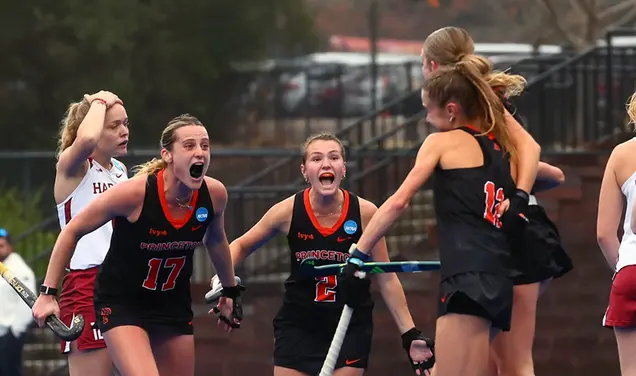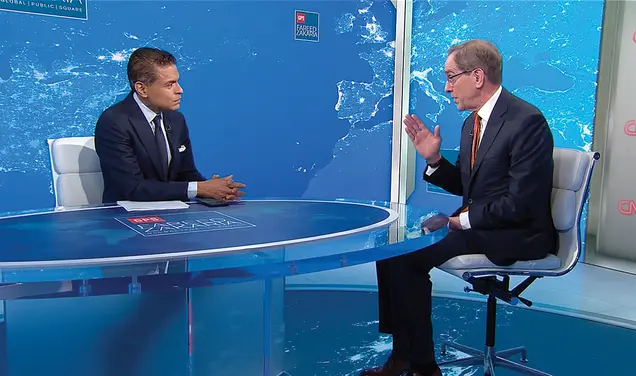Princeton and the Second Great War
A summary of the contributions and experiences of the University
Dr. Brown is dean-designate of the faculty, professor of economics, director of the Industrial Relations Section and adviser to federal departments and agencies on problems dealing with manpower. The following summation of the University’s war experience is based on a talk he gave at the meeting of the Graduate Council on November 9.
The size of the job done by Princeton University during the eighth war since its founding can be readily demonstrated. The essential character and quality of that job will become clear only as the passage of time affords better perspective. The complex nature of the service which a university performs, and the great range of activities of its scholars and scientists, make statistical measures but feeble symbols of values and accomplishment.
During the war nearly 20,000 men received instruction for military service on the Princeotn campus, provided either by the University faculty or by military personnel. Army programs have included 3,500 in the Army Specialized Training Program, 2,000 in the Post Exchange School and, more recently, 30 in a Staff Officers European Studies Course. Navy programs have included 2,100 in the V-12 and Reserve Officers Training Corps programs, 950 in the Pre-Radar School, 1,250 in the School of Military Government and 8,250 in the Officers Indoctrination School. In October, a year ago, the military population of the campus reached 3,600 persons at a time when our civilian enrollment had fallen to approximately 400. For services rendered, the government paid the University some $4,750,000, a welcome but well-earned compensation. Meanwhile, Princeton provided instruction to 3,600 war workers in key industrial centers throughout New Jersey in 88 courses covering engineering, chemistry, physics and mathematics.
Months before Pearl Harbor, research on the campus was shifting quietly but vigorously to war determined projects. Princeton’s contributions to research on the production of atomic energy are well known and include work on new processes for separating uranium 235, on new methods of producing heavy water, on barriers for isotope separation, as well as a broad program of analytical chemical research. But highly significant work was done in a wide range of other projects which can only be suggested by the following examples: chemo-therapeutic agents; the conditions promoting the release of gases dissolved in blood; the mechanics of wounding; the ballistics of projectiles and the definition of their penetrating power; the properties of synthetic rubbers; new methods of producing butadiene; problems of chemical warfare; the application of statistical methods to production and classification problems; rotary wing aircraft; horizontal pressures in flexible bulkheads; vibration effects on airport landing strips; optimum hours of work; factors in utilization of manpower. Work on government research projects involved appropriations exceeding $4,000,000. In other fields, the armed services purchased many thousands of copies of research reports.
But the history of Princeton’s war experience can be differentiated but little from that of many other universities if numbers of trainees, size of research projects and dollars of compensation are considered the principal indices of contribution to the war effort. These indices leave out the influences which Princeton has had, in their college years, upon thousands of her sons who served with devotion and effectiveness in the armed services, government and supporting activities in the prosecution of the war. They leave out, also, any reflection of those intangible qualities and assumptions which permeate the activities of an institution which has sought for two hundred years to help make mankind free.
What were Princeton’s special contributions in the war? Did it remain true to its traditions in the character of its effort, in the standards of its performance? In answering these questions, no member of the Princeotn family can be free from bias. My answers are based in part, at least, on the judgments of many persons outside of the Princeton community.
An early and lasting characteristic of Princeton’s war activity was the persistent will to serve. The traditions of men like Witherspoon and Wilson gave Princeton an immediate and definite answer as to its duty whenever war became imminent. It went to work with drive, adaptability and intelligence. It did not wait for orders. It helped the government to plan the best use of its own services and those of universities generally.
A second characteristic of the University during the war years was a pervading sense of individual and institutional responsibility, not for the assigned task alone, but for the total situation, the final causes, the final results. By tradition and location Princeton felt itself to be in the midst of the war. The religious and intellectual self-discipline of many generations of scholars and scientists sharpened this sense of total responsibility.
Despite the pressures of numbers and speed, another characteristic of the University’s war effort was the restless urge toward the more perfect way, toward doing a quality job even when quantity seemed called for. Coupled with this was the deeply felt sense of the importance of the individual student. Princeton long ago made the decision that it was better to teach a few men well than many men poorly. The requirements of the armed services left little choice as to the numbers of students Princeton should accept. It is to the credit of the faculty and administration that so little ground was conceded in the maintenance of instructional standards and in the emphasis on the individual student. These elements of Princeton’s traditions were sustained only through tireless efforts which have left a temporary but definite sense of war weariness among our faculty and administration.
The will to serve, the sense of total responsibility, the urge toward perfection and the emphasis on the individual are all satisfying attributes for any institution to cherish. One should be cautious in ascribing them too readily in relation to a task so recently completed. While each observer must make his own evaluation when such intangibles are involved, two elements in Princeton’s war experience give assurance that the conclusions will stand the test of time.
First, these attributes, ,merged at Princeton in the liberal approach to teaching, produced marked results in the men assigned to Princeton for preservice training, just as they have influence students for generations past. The armed services recognized these results as an important factor in the military effectiveness of the men who went on to tasks of leadership. Princeton sought to teach the man and not the subject alone, the “why?” and not just the “how?” It sought to inculcate the responsibility to think, feel and judge as if one’s decision were to be final. While many military officers did not stop to diagnose the causes, the liberal approach to training which Princeton exemplified received support and commendation at all levels in the armed services.
Second, these same attributes shone through the great task of research which Princeton accomplished. From the first, the aim in project after project was to get at the bottom of the problem. As a smaller university with close ties between the various area of science and engineering, the bias of the practitioner or of the single discipline was more easily avoided in the search for truth, wherever it lay and by whatever path it could be sought. The still to take infinite pains in learning fundamental truths produced results in military terms. A university which emphasized pure research not only contributed precious knowledge and techniques in its normal fields of endeavor but demonstrated effectively that kind of ability to adapt and apply which thorough knowledge and disciplined imagination affords. Such accomplishments reflect again the tradition of individual and institutional responsibility in the search for the more perfect way.
But Princeotn learned, as well as taught, in the strenuous years of war. Despite its cherished traditions, the war was no easy test of the University’s capacity to perform under severe pressure and trying handicaps. It learned, as an institution, it could do a job, and if need be, turn on a ten-cent piece. It gained renewed conviction that the liberal approach in higher education produced valuable results but that the precise content of a liberal curriculum was less significant than the manner in which that curriculum was taught. Princeton found new proof that its emphasis on the individual was a necessity and not a luxury in teaching men who will assume the responsibilities of leadership. It learned that the selection of such men was no easy task and that its own past efforts, while relatively successful, might well be applied to a broader stream of American youth.
The attitudes of students in time of war proved again the importance of motivation in the process of education. Experience reinforced the conviction that the mastery of some area of knowledge is the key to a liberal education and that the motive of becoming generally informed fails when the going gets tough. Princeton along with other liberal colleges found that acceleration produces rapidly diminishing returns; that education, as opposed to vocational training, takes time.
Princeton comes out of the war with renewed enthusiasm for fundamental research, not only for its contribution to knowledge, but as the ever refreshing source of inspiration for its faculty. But research like all higher education requires time for analysis and contemplation, and freedom to drive shafts wherever promising veins of truth occur.
Finally, during the dark days of war, Princeton learned more fully its place in the complex of American life. It came to realize anew that it was a national institution affected by the public interest in every sense of that expression. Perhaps in the period between the wars it had been too restrained in appreciating the public’s interest in one of the nation’s oldest assets. As Princeton approaches its bicentennial year, the lessons of the war may well warrant a broader recognition of the nation’s interest in Princeton, as well as Princeton’s interest in the nation and the world.
This was originally published in the November 16, 1945 issue of PAW.










No responses yet